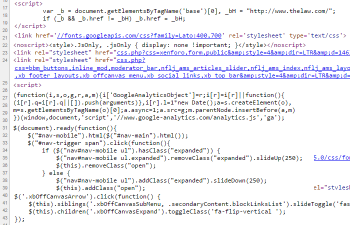After three days of deliberation, a U.S. District Court jury unanimously concluded that Google's inclusion of a portion of Oracle's Java API ("Application Programming Interface") within its Android operating system was lawful fair use. Oracle, which stood to reap an estimated $9 billion in damages, is expected to appeal. The ultimate result of this case could significantly effect the future of software interoperability and compatibility.
 An "API" is a set of instructions a software vendor may make available so that outsiders such as software developers can create applications which interact and communicate with the vendor's product. For example, you may wish to display a Google Map on your website which offers a view centered in New York City. You could go to the Google Maps website and manually enter a specific location (such as the Empire State Building) or the latitude and longitude of a central point in New York City. But how would one embed that map so it automatically appears on your web site? Google offers an API - a set of instructions explaining how you can use a certain syntax to generate and retrieve a map from Google Maps. Insert coordinates for latitude ("lat") and longitude ("lng") into this simple function and it will render a map on a web page.
An "API" is a set of instructions a software vendor may make available so that outsiders such as software developers can create applications which interact and communicate with the vendor's product. For example, you may wish to display a Google Map on your website which offers a view centered in New York City. You could go to the Google Maps website and manually enter a specific location (such as the Empire State Building) or the latitude and longitude of a central point in New York City. But how would one embed that map so it automatically appears on your web site? Google offers an API - a set of instructions explaining how you can use a certain syntax to generate and retrieve a map from Google Maps. Insert coordinates for latitude ("lat") and longitude ("lng") into this simple function and it will render a map on a web page.
While the Google API provides a very limited instruction on how to generate a map, developers and users never see the secret sauce. The code at Google which actually does the work and heavy lifting is never revealed. While there is no question that the underlying and private Google Maps code is protected by copyright law, should these limited instructions or function names be considered for copyright protection? Should developers be required to pay licensing fees merely to use the mundane and functional API instructions within their applications?
Copyright law protects "original works of authorship." In 2012 when this case first went to trial in the U.S. District Court, Judge William Alsup ruled that copyright covers the creative aspects of a work, not the functional. The mere function names and basic instructions for information retrieval of an API were not protected by copyright law. But in 2014, the Federal Circuit Court of Appeals disagreed in holding that APIs were copyrightable. But the issue of whether Google made lawful "fair use" of the APIs remained and the case was sent back to the District Court.
A four factor test is used by the courts to determine whether the use of a copyrighted work is "fair" under the Fair Use Doctrine. The third factor weighs "the amount and substantiality of the portion used in relation to the copyrighted work as a whole." In other words, did the borrowed portion consist of a substantial portion of what was created - or is the amount used negligible? Google's argument was that the Java API code consisted of less than 0.01% of the code in its Android operating system - only 11,500 lines. In Oracle America Inc. v. Google Inc., 10-cv-03561, U.S. District Court, Northern District of California (San Francisco), the jury found that 37 Java package names and approximately 11,500 lines of declaration code were considered fair use.
While the verdict finding API use to be lawful fair use is a victory for innovation and lauded by the Electronic Frontier Foundation, this case is far from over. Oracle has vowed to appeal and the case will return to the Federal Circuit Court of Appeals. It is not unlikely that the Federal Circuit may again find on behalf of the copyright owner, Oracle, and reverse the finding of the jury. The loser of round two with the Federal Circuit will have another chance to appeal to the U.S. Supreme Court, which declined to hear the case during its first trip through the Federal Courts. A win for Oracle could result in a multitude of lawsuits stemming from current development practices surrounding API use.
What is an API or Application Programming Interface?
 An "API" is a set of instructions a software vendor may make available so that outsiders such as software developers can create applications which interact and communicate with the vendor's product. For example, you may wish to display a Google Map on your website which offers a view centered in New York City. You could go to the Google Maps website and manually enter a specific location (such as the Empire State Building) or the latitude and longitude of a central point in New York City. But how would one embed that map so it automatically appears on your web site? Google offers an API - a set of instructions explaining how you can use a certain syntax to generate and retrieve a map from Google Maps. Insert coordinates for latitude ("lat") and longitude ("lng") into this simple function and it will render a map on a web page.
An "API" is a set of instructions a software vendor may make available so that outsiders such as software developers can create applications which interact and communicate with the vendor's product. For example, you may wish to display a Google Map on your website which offers a view centered in New York City. You could go to the Google Maps website and manually enter a specific location (such as the Empire State Building) or the latitude and longitude of a central point in New York City. But how would one embed that map so it automatically appears on your web site? Google offers an API - a set of instructions explaining how you can use a certain syntax to generate and retrieve a map from Google Maps. Insert coordinates for latitude ("lat") and longitude ("lng") into this simple function and it will render a map on a web page.
Code:
var map;function initMap(){
map =new google.maps.Map(document.getElementById('map'),{
center:{lat:-34.397, lng:150.644},
zoom:8
});}While the Google API provides a very limited instruction on how to generate a map, developers and users never see the secret sauce. The code at Google which actually does the work and heavy lifting is never revealed. While there is no question that the underlying and private Google Maps code is protected by copyright law, should these limited instructions or function names be considered for copyright protection? Should developers be required to pay licensing fees merely to use the mundane and functional API instructions within their applications?
Android OS Makes Fair Use of the Java API
Copyright law protects "original works of authorship." In 2012 when this case first went to trial in the U.S. District Court, Judge William Alsup ruled that copyright covers the creative aspects of a work, not the functional. The mere function names and basic instructions for information retrieval of an API were not protected by copyright law. But in 2014, the Federal Circuit Court of Appeals disagreed in holding that APIs were copyrightable. But the issue of whether Google made lawful "fair use" of the APIs remained and the case was sent back to the District Court.
A four factor test is used by the courts to determine whether the use of a copyrighted work is "fair" under the Fair Use Doctrine. The third factor weighs "the amount and substantiality of the portion used in relation to the copyrighted work as a whole." In other words, did the borrowed portion consist of a substantial portion of what was created - or is the amount used negligible? Google's argument was that the Java API code consisted of less than 0.01% of the code in its Android operating system - only 11,500 lines. In Oracle America Inc. v. Google Inc., 10-cv-03561, U.S. District Court, Northern District of California (San Francisco), the jury found that 37 Java package names and approximately 11,500 lines of declaration code were considered fair use.
The Impact of the District Court Verdict
While the verdict finding API use to be lawful fair use is a victory for innovation and lauded by the Electronic Frontier Foundation, this case is far from over. Oracle has vowed to appeal and the case will return to the Federal Circuit Court of Appeals. It is not unlikely that the Federal Circuit may again find on behalf of the copyright owner, Oracle, and reverse the finding of the jury. The loser of round two with the Federal Circuit will have another chance to appeal to the U.S. Supreme Court, which declined to hear the case during its first trip through the Federal Courts. A win for Oracle could result in a multitude of lawsuits stemming from current development practices surrounding API use.
- Legal Practice
- IP - Copyright Infringement
- Jurisdiction
- US Federal
- Court of Law
- U.S. Court of Federal Claims
